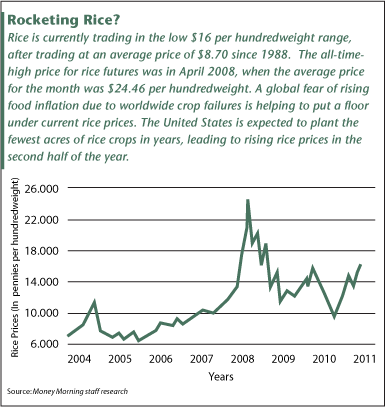(Reuters) – Gold hit one-month highs on Wednesday in its longest stretch of gains in over two months as investors sought the safety of bullion in the face of an uncertain outcome to a key EU summit and after a…
Tag: futures
Gold Will Continue to Shine

This gallery contains 0 photos →
Stocks Rally After Three-Day Slide; Oil, Commodities Advance, Euro Weakens

This gallery contains 0 photos →
Wheat Trading

This gallery contains 0 photos →
Why you should Buy Rice Futures

This gallery contains 0 photos →